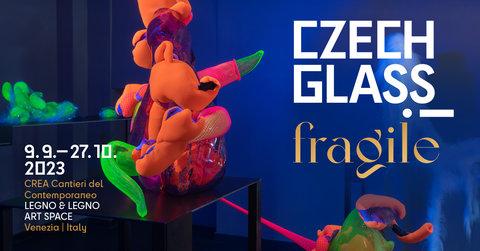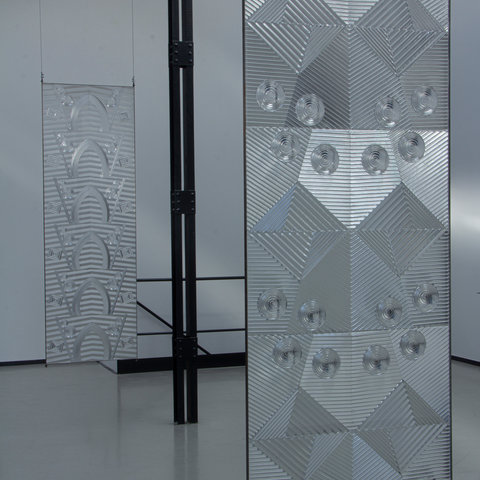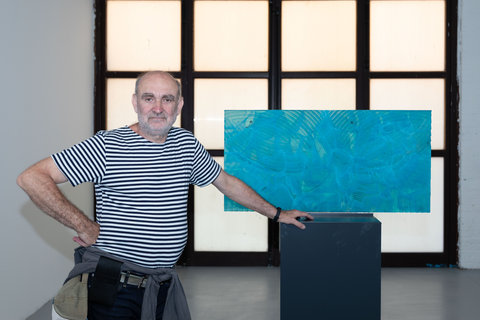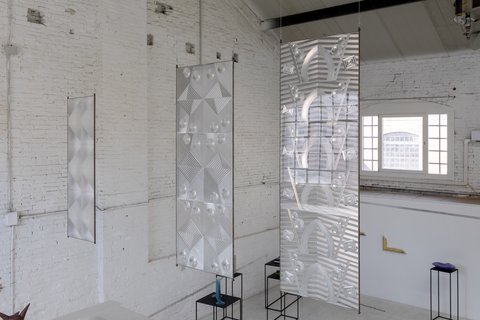



Zdeněk Lhotský
He graduated in metallurgical glass shaping at the Secondary School of Glassmaking in Železný Brod. After that, he worked shortly at the Centre for Glass in Architecture in the company Železnobrodské sklo. After that he continued his studies at the Prague Academy of Arts in Studio glass under the guidance of legendary prof. Stanislav Libenský. After graduation, he needed some distance from the art of glass for several years and devoted himself to other art disciplines.
In 1994, at the instigation of Libenský, he bought the glass workshops in Pelechov in northern Bohemia that had been closed down and founded the Lhotský studio there, which specializes in the melted glass sculpture technique. The studio is a world leader in this field, the works of important Czech and foreign glass artists are melted here. The portfolio includes, for example, the Brazilian sculptor and performer Tunga, the famous Dutch designer Peter Bremers or the Danish sculptor Bjørn Nørgaard. He worked together with the latter Lhotský for seven years on the making of a sarcophagus for Queen Margrethe II of Denmark. The production and manufacturing of this 4.5-ton sculpture - one of the largest glass sculptures in the world - was carried out by the Lhotský studio. " We do things that no one else in the world can do, we explore the limits of feasibility and impracticability."
Lhotský is an incredibly versatile person, and his artistic scope is quite wide. He alternates the creation of melted glass sculptures and glass design with drawings, graphics, metal sculptures and installations in interiors and architecture in general. He participated in dozens of competitions, and only some of the challenges were eventually completed. However, this never discouraged him, the circumstances of his creation are more interesting to him than the completed works themselves. "I'm not interested in finished objects. I'm interested in their stories. When I finish them, they almost die for me. I'm interested in the process of making, when something is being created and the stories of how it's created."
His work has distinctive features. What unites all his artistic expressions is geometry. It does not matter whether it is the facades of buildings, works in public space, interior lighting, fountains, staircases, vessels of all kinds, what is specific about his works and what unites all of them are different geometric shapes, visual decors. But the author is not obsessed with it. He does not decorate at any cost. On the contrary, it is a natural and spontaneous means of artistic expression for him. He uses the decor systematically and always looks for new, original forms of its application. He views ornaments as a challenge. As he says with a little bit of exaggeration, he had an imaginary discussion with architect Adolf Loos about whether or not ornament is a crime. He keeps using decor despite the fact - or perhaps precisely because of the fact - that decor in the Czech glass making is rather forbidden.
At the exhibition, Lhotský presents himself with three transparent optical reliefs. “The design of the reliefs is based on the geometry of the individual elements, which are repeated. By assembling them into a whole, a countless number of possibilities is created, hundreds of combinations. It's fun, never-ending game… Hand-drawn author's patterns are scanned and created using 3D technology models. These are used to create a classic plaster sand mould. This is followed by a melting and cooling process lasting several weeks, after which the reliefs are grinded by hand, polished and polished using acid. Precise knowledge of optics and refraction is very important for a high quality result. ”
Zdeněk Lhotský has had a number of individual and group exhibitions under his belt, his works are part of many private and public galleries and museums.


